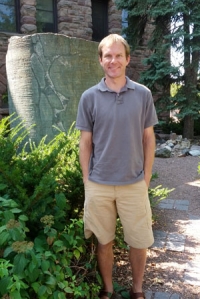By: Jonathan Pundsack, Managing Director of the Polar Geospatial Center
In mid-September, the Polar Geospatial Center hosted the NSF-Sponsored Workshop on Cyberinfrastructure for Polar Sciences at the University of Minnesota McNamara Alumni Center. The workshop featured invited talks, plenary discussions, and breakout sessions, and was attended by approximately 60 in-person participants. In addition, community members were invited to participate virtually. Plenary talks (downloadable as a PDF document) and recorded video presentations are available on the workshop website.
Workshop Background and Goals
The Polar Cyberinfrastructure Program at NSF has the potential to transform polar research by facilitating the transmission and integration of data and knowledge across the polar and cyberinfrastructure (CI) communities. Community input is essential to the process of realizing these goals to ensure that the infrastructure investments meet the on-the-ground requirements of scientists working in each domain. For the program to meet the needs of the science community, stakeholders from the broadest range of science domains must be engaged in defining and communicating their cyberinfrastructure needs and desires.
In order to support a strategic vision of the NSF Polar Cyberinfrastructure Program and to build on the EarthCube experience, a workshop on Cyberinfrastructure for Polar Sciences was held 10-12 September 2013 at the Polar Geospatial Center in St. Paul, Minnesota. The goal of this workshop was to engage scientists and engineers to ensure that the cyberinfrastructure needs for this community are aligned with the overall plans and design of a Polar Cyberinfrastructure Strategic Plan.
Workshop Products
The third day of the workshop was reserved for the Organizing Committee and select participants to begin framing and drafting a workshop report. The completed report will address connections between computer and polar sciences concerning what can be accomplished in the short-term (1-5 years) and long-term (5-10+ years). The outcomes of this workshop will support community-driven design and architecture of a polar science CI that is aligned with the following end-users' needs:
- Long-term sustainable curatorship, standardization, management, and discovery of data and metadata; visualization; manipulation; and analysis.
- Use of high performance computing (HPC) for direct and sustainable advances in current polar research.
- Big data and data access.
- Interoperability with data from other domains.
- E-learning and educational tools based on cyberinfrastructure components.
- Virtual organizations.
Workshop Recommendations
Workshop Organizing Committee Members
Alberto Behar - Arizona State University
Robin Bell - Lamont-Doherty Earth Observatory
Geoffrey Charles Fox - Indiana University, Bloomington
Jeff Dozier - University of California, Santa Barbara
John Helly - University of California, San Diego
Wenwen Li - Arizona State University
Paul Morin - University of Minnesota
Mark Parsons - Rensselaer Polytechnic Institute
Jonathan Pundsack - University of Minnesota
Andrew Roberts - Naval Postgraduate School
Marco Tedesco (ex officio) - NSF
Chaowei Yang - George Mason University
The workshop participants were surveyed for the top priorities of polar cyberinfrastructure component needs. The survey results were then categorized and collated. Four of the priorities stood out as requirement recommendations for the coming two years. These are:
Data as a Service (DaaS) – DaaS is clearly a common denominator and should be emphasized in program opportunities within the next two years. The goals are to provide on-demand data sharing through discovery, access, transportation, and delivery service to the end-user. The DaaS recommendation includes both data production and consumption, since the interface between the two requires interoperability on each side and this should be viewed, managed, and implemented according to system engineering best-practices to ensure openness and platform independence.
Education and Training – A variety of training forms ranging from informal workshops to formal education is essential to maintain a sustainable and cutting-edge polar CI to enable polar sciences.
Communication and Networking – Networking continues to be a major bottleneck in polar sciences. This includes syncing data with data centers when conducting fieldwork and freely moving data for polar research across data centers.
Community Building and Community Portals – Polar CI is an emerging community crossing many disciplines, and the community needs proper mechanisms to improve the awareness, advance the building and utilization, and sustain the evolution of Polar CI. Polar cyberinfrastructure is recommended for:
- Fostering smart phone sensor polar network communication.
- Increasing satellite bandwidth for scientists conducting polar field trips to move the data from/to the polar regions.
- Suppling fast and reliable Internet connection for polar research.
- Sharing and standardizing tools for moving data to/from polar regions.
Other components, notably modeling and data analysis including visualization, algorithms, and software, will be addressed by subsequent workshops. Their planning horizons will be blended with these recommendations.
A report from the workshop will be made available prior to the 2013 American Geophysical Union Fall Meeting and distributed via the workshop website and other channels.
For more information, visit the workshop website or contact Jonathan Pundsack, Managing Director of the Polar Geospatial Center (pundsack [at] umn.edu).


